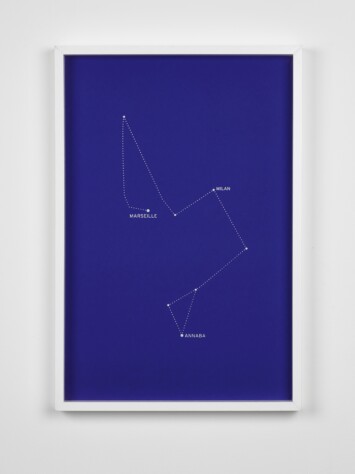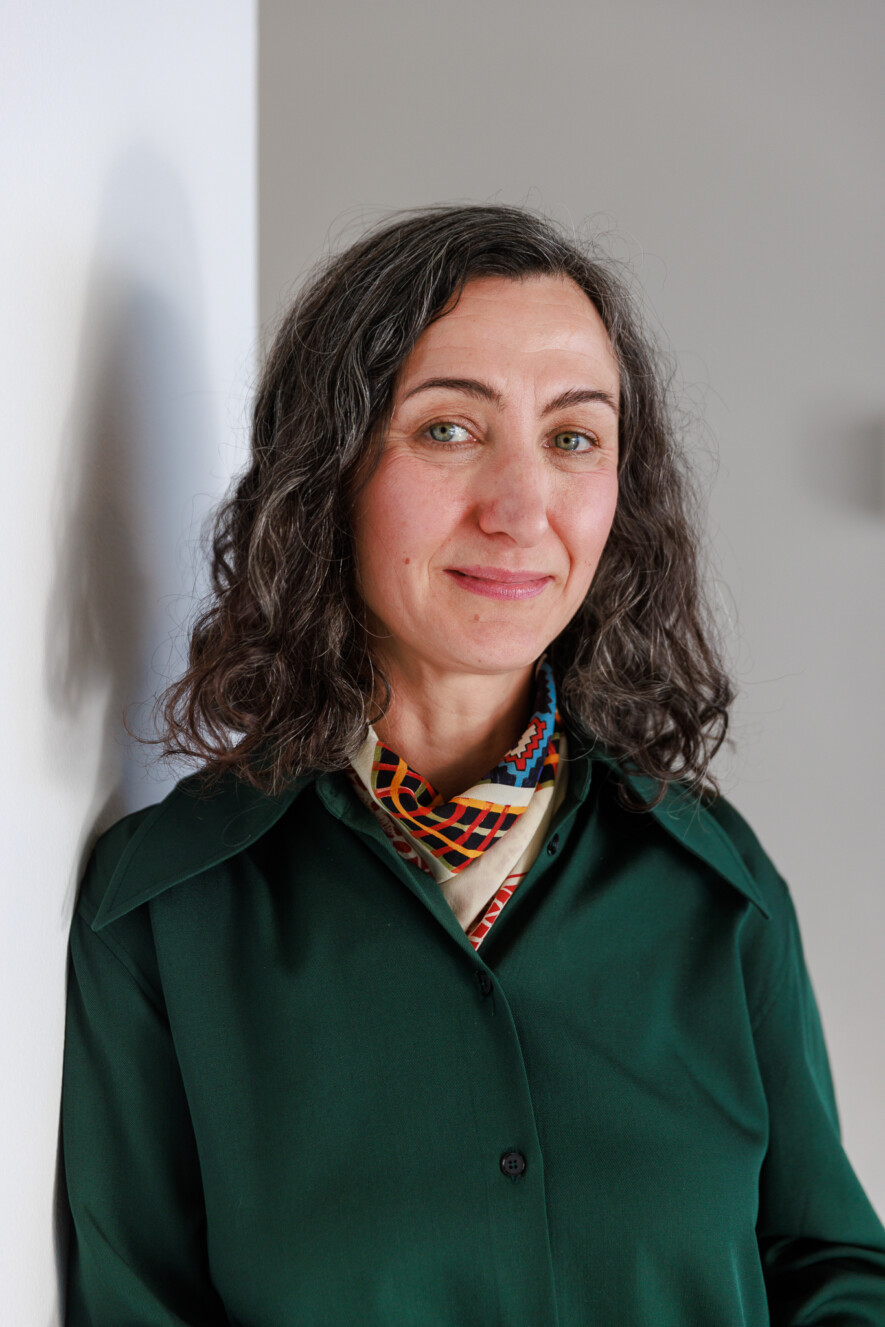
Bouchra Khalili, The Constellations Series (detail), 2011. Credit: Courtesy of the artist and mor charpentier, Paris
The Polygon Gallery presents Star Witnesses—an assembly of works observing the cosmos—until Sept. 28. For curator Monika Szewczyk, the exhibit resembles a constellation that connects stories from different communities, reminding viewers of their role as witnesses.
“There’s no universal way of looking at the universe; we are all attempting to read meaning into our place on Earth,” Szewczyk shares. “Spending time with these acts of witnessing can inspire us to be better witnesses of our world.”
Star-crossed observers
The exhibit features local and international artists, including those from Latvia, Germany, America, Australia and Morrocco. For Szewczyk, each of these artists provides “very sophisticated and necessary perspectives” about living on Earth.
“[Star Witnesses] is about relating these stories to each other,” she adds. “There’s stories of migration, stories of thinking through the legacies of colonialism, stories of attempts to find wonder in everyday phenomena.”
One of these stories lies in local artist Paul Wong’s Solstice, a video that condenses a day into 24 minutes. The work engages with the idea of spectatorship and was filmed in the back alley behind Vancouver’s Carnegie Centre. The shots were then merged into frames using a computer program, creating an effect Szewczyk sees as a “simulation of motion.”
Another story is composed through Carrie Mae Weems’s The North Star—an image of Polaris placed in an oval frame. For Szewczyk, this work resembles “an eye watching you,” reflecting how the exhibit treats artists, viewers, and artworks as star witnesses.
“That oval frame showing Polaris is repeated seven times,” the curator describes. “It’s quite an enigmatic gesture; it really creates this sense of music reverberating, or something moving across generations.”
According to Szewczyk, The North Star is an “anomaly” in Mae Weems’ work, which usually features portraits of people. This work draws on the story of the artist’s grandfather, Frank Weems, a union organizer in the American South during the 1930s. After a near-death beating by a mob of planters, Frank escaped to Chicago by following the north star.
“If you think about any image of the night sky, it’s gazing deep into space, but it’s also gazing deep into time,” Szewczyk adds, noting Mae Weems never met her grandfather. “There is this sense of somebody trying to connect to someone at a distance through this image of the north star.”
Migration stories
Star Witnesses also features American artist David Horvitz’s For Kiyoko—another work that connects with the past. The work was inspired by Horvitz’s Japanese American grandmother who was interned by the American government during the Second World War.
“It’s very beautiful that these artists have chosen astral images in order to make these gestures, to investigate their histories, to contact their ancestors,” Szewczyk adds.
The exhibit also showcases artists engaging with migration patterns, including Moroccan artist Bouchra Khalili’s The Constellations Series. The work focuses on the migration of people to Europe. According to Szewczyk, Khalili first filmed her subjects, most of whom she met at transit hubs, then traced their journeys on a map.
“The prints themselves only show traces of the route, and those traces are white, sunk into a deep indigo ground, so they start to look like constellations,” the curator adds.
Themes of displacement and migration are also explored in The Stars Above Us, a work by Urban Subjects. The Canadian Austrian cultural research collective produced a postcard featuring the sky above Traiskirchen, one of the largest refugee camps in Europe. For Szewczyk, the image is both one of hope and vulnerability.
“Even when you’re seeing a very similar image of the stars…the artists use those images to relate very specific stories,” she shares. “Stories that very much depend on where they were born, where they may have traveled, where they have walked planet earth, and who they have encountered along the way.”
For the curator, the exhibit’s presentation of these details highlights how “distinct points of view can coexist.” She hopes that viewers will take their time as they move through the gallery—taking in this “space-time phenomenon.”
“These works are made over long periods of time, and they ask you to spend time with them,” she adds. “What seems to be very necessary at this point is not so much to be judges of our world, but to be witnesses who really regard, understand, and try to remember what is happening.”
For more information, see https://thepolygon.ca/exhibition/star-witnesses/.









